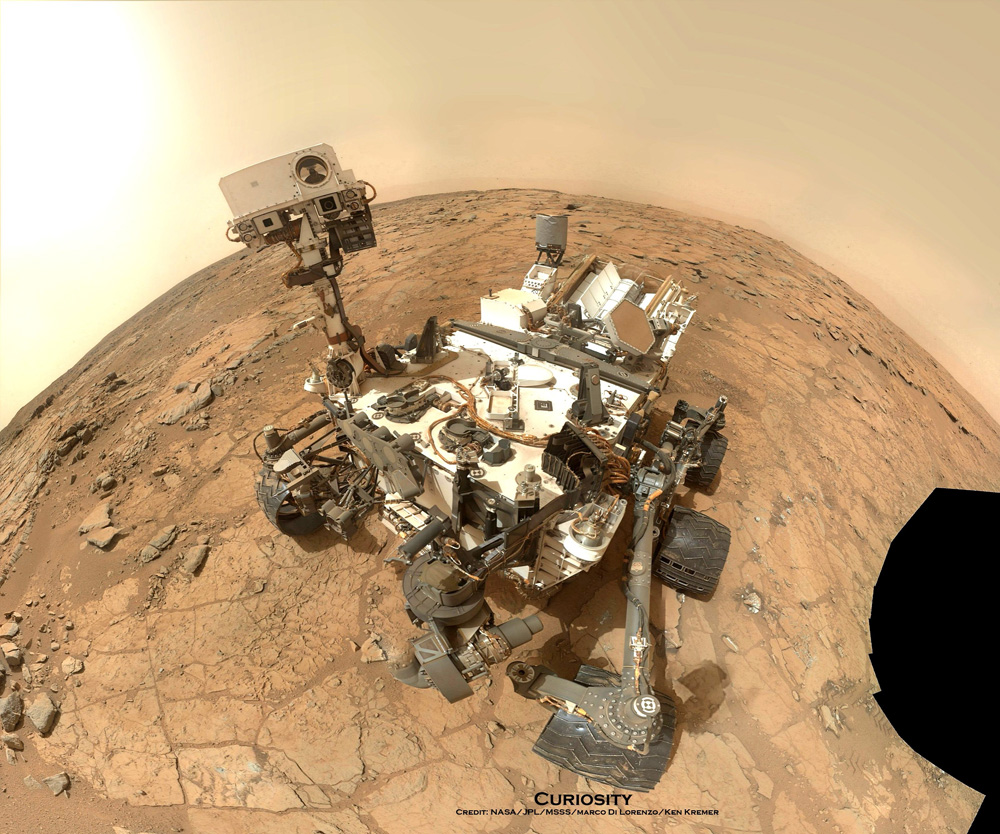Radiation on Mars 'Manageable' for Manned Mission, Curiosity Rover Reveals

The risk of radiation exposure is not a show-stopper for a long-term manned mission to Mars, new results from NASA's Curiosity rover suggest.
A mission consisting of a 180-day cruise to Mars, a 500-day stay on the Red Planet and a 180-day return flight to Earth would expose astronauts to a cumulative radiation dose of about 1.01 sieverts, measurements by Curiosity's Radiation Assessment Detector (RAD) instrument indicate.
To put that in perspective: The European Space Agency generally limits its astronauts to a total career radiation dose of 1 sievert, which is associated with a 5-percent increase in lifetime fatal cancer risk. [Mars Radiation Threat to Astronauts Explained (Infographics)]
"It's certainly a manageable number," said RAD principal investigator Don Hassler of the Southwest Research Institute in Boulder, Colo., lead author of a study that reports the results today (Dec. 9) in the journal Science.
A 1-sievert dose from radiation on Mars would violate NASA's current standards, which cap astronauts' excess-cancer risk at 3 percent. But those guidelines were drawn up with missions to low-Earth orbit in mind, and adjustments to accommodate trips farther afield may be in the offing, Hassler said.
"NASA is working with the National Academies' Institute of Medicine to evaluate what appropriate limits would be for a deep-space mission, such as a mission to Mars," Hassler told SPACE.com. "So that's an exciting activity."
The new results represent the most complete picture yet of the radiation environment en route to Mars and on the Red Planet's surface. They incorporate data that RAD gathered during Curiosity's eight-month cruise through space and the rover's first 300 days on Mars, where it touched down in August 2012.
Breaking space news, the latest updates on rocket launches, skywatching events and more!
The RAD measurements cover two different types of energetic-particle radiation — galactic cosmic rays (GCRs), which are accelerated to incredible speeds by far-off supernova explosions, and solar energetic particles (SEPs), which are blasted into space by storms on our own sun.
RAD's data show that astronauts exploring the Martian surface would accumulate about 0.64 millisieverts of radiation per day. The dose rate is nearly three times greater during the journey to Mars, at 1.84 millisieverts per day.
But Mars' radiation environment is dynamic, so Curiosity's measurements thus far should not be viewed as the final word, Hassler stressed. For example, RAD's data have been gathered near the peak of the sun's 11-year activity cycle, a time when the GCR flux is relatively low (because solar plasma tends to scatter galactic cosmic rays).
Curiosity's radiation measurements should help NASA plan out a manned mission to Mars, which the space agency hopes to pull off by the mid-2030s, Hassler said. And they should also inform the search for signs of past or present life on the Red Planet — another top NASA priority.
For example, the new RAD results suggest that microbial life is unlikely to exist right at the Martian surface, Hassler said. But future missions may not have to drill too deeply underground to find pockets of Mars life, if it ever existed.
"These measurements do tell us that we think it could be viable to find signs of possible extant or past life as shallow as 1 meter deep," Hassler said.
The new study is one of six papers published in Science today that report new results from Curiosity. Most of the other studies present evidence that the rover has found an ancient freshwater lake that could have supported microbial life for tens of thousands, and perhaps millions, of years.
Follow Mike Wall on Twitter @michaeldwall and Google+. Follow us @Spacedotcom, Facebook or Google+. Originally published on SPACE.com.

Michael Wall is a Senior Space Writer with Space.com and joined the team in 2010. He primarily covers exoplanets, spaceflight and military space, but has been known to dabble in the space art beat. His book about the search for alien life, "Out There," was published on Nov. 13, 2018. Before becoming a science writer, Michael worked as a herpetologist and wildlife biologist. He has a Ph.D. in evolutionary biology from the University of Sydney, Australia, a bachelor's degree from the University of Arizona, and a graduate certificate in science writing from the University of California, Santa Cruz. To find out what his latest project is, you can follow Michael on Twitter.


